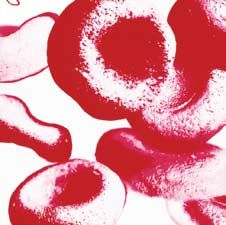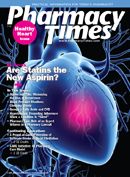Publication
Article
Pharmacy Times
Coagulation Counseling
Author(s):
Dr. Garrett is manager, Outpatient Clinical Pharmacy Programs, at Mission Hospitals in Asheville, North Carolina.
New Anticoagulants Tested for Stroke Prevention in AF Patients
A recent study published in the New England Journal of Medicine concluded that a new anticoagulant, dabigatran, appears at least as safe and effective as warfarin for preventing stroke in patients with atrial fibrillation (AF). Dabigatran is an oral direct thrombin inhibitor.
The study, which included 18,113 patients with AF and a risk of stroke, assigned patients to receive fixed doses of dabigatran (110 or 150 mg twice daily) or adjusted-dose warfarin. The median duration of the follow-up period was 2 years. The primary outcome was stroke or systemic embolism.
Rates of the primary outcome were 1.69% per year in the warfarin group, as compared with 1.53% per year in the group that received 110 mg of dabigatran and 1.11% per year in the group that received 150 mg of dabigatran. The rate of major bleeding was 3.36% per year in the warfarin group, as compared with 2.71% per year in the group receiving 110 mg of dabigatran and 3.11% per year in the group receiving 150 mg of dabigatran. The rate of hemorrhagic stroke was 0.38% per year in the warfarin group, as compared with 0.12% per year with 110 mg of dabigatran and 0.10% per year with 150 mg of dabigatran. The mortality rate was 4.13% per year in the warfarin group, as compared with 3.75% per year with 110 mg of dabigatran and 3.64% per year with 150 mg of dabigatran.
Another anticoagulant, edoxaban, which is an oral factor Xa inhibitor, is currently in phase 3 trials for stroke prevention in AF. Sixteen thousand patients will be enrolled to receive either 30 or 60 mg of edoxaban or adjusted-dose warfarin. The efficacy of edoxaban already has been demonstrated for postsurgical clot prevention in hip and knee replacement.

Anticoagulation Lacks Benefit in Patients with Central Venous Catheters
Cancer patients who have implanted central venous catheters have typically received low-dose warfarin prophylactically to prevent thromboses from forming around the catheters. The data supporting this practice are now more than 10 years old, and newer catheters that have been developed appear to be less thrombogenic. A study of 1590 patients in the United Kingdom assigned patients to receive either no warfarin, fixed-dose warfarin at 1 mg per day, or adjusted-dose warfarin (international normalized ratio 1.5-2). The primary outcome was the rate of radiologically proven, symptomatic catheterrelated thrombosis. Warfarin use did not reduce the rate of catheter-related thromboses compared with no warfarin. Major bleeding events were rare and occurred most often in the adjusted-dose group. A combined end point of thromboses and major bleeding showed no difference between comparisons.
Lupus Anticoagulant Increases Risk of MI and Stroke in Young Women
A new study shows that lupus anticoagulant, a subtype of antiphospholipid antibodies (aPL), dramatically increases the risk for ischemic stroke and to a lesser degree myocardial infarction (MI) in young women.
The presence of lupus anticoagulant was associated with a >40-fold increase in the risk for stroke and a 5-fold increase in MI. The presence of other cardiovascular risk factors, such as smoking or use of oral contraceptives, dramatically increased this already high risk.

Antiphospholipid syndrome is an acquired risk factor for arterial thrombosis. The syndrome has been found to be more prevalent in women under the age of 50 than the general population. It is characterized by vascular thrombosis or complications during pregnancy. Diagnosis is confirmed by positive blood tests for aPL performed at least 12 weeks apart.
Recommendations for secondary prevention after noncardioembolic stroke call for antiplatelet over anticoagulant therapy, but some experts prefer anticoagulants in those with antiphospholipid syndrome. The authors of the study suggest screening for lupus anticoagulant in young women with ischemic stroke to help guide therapeutic decisions. â–







